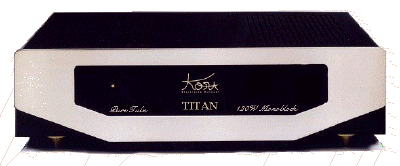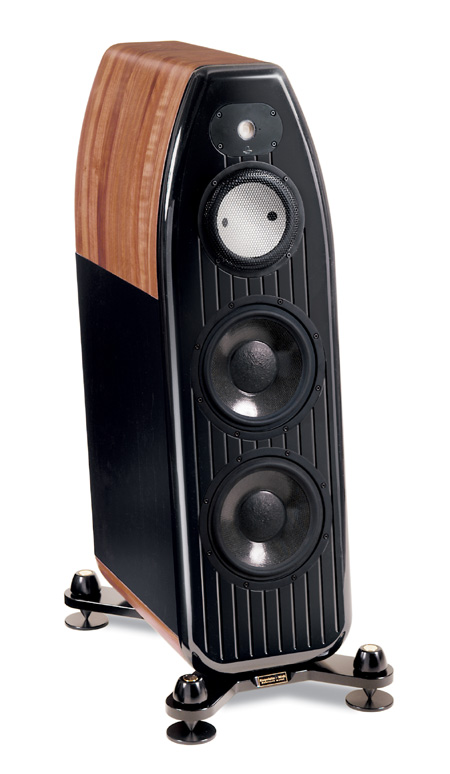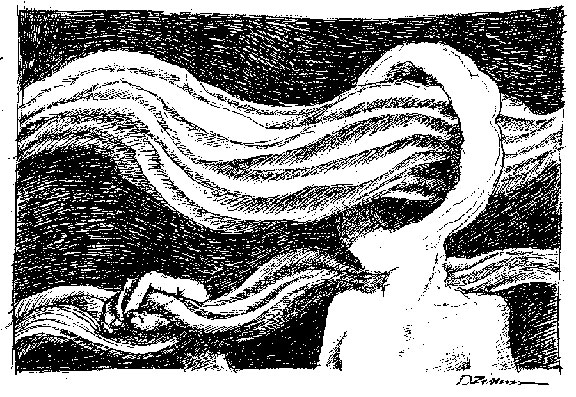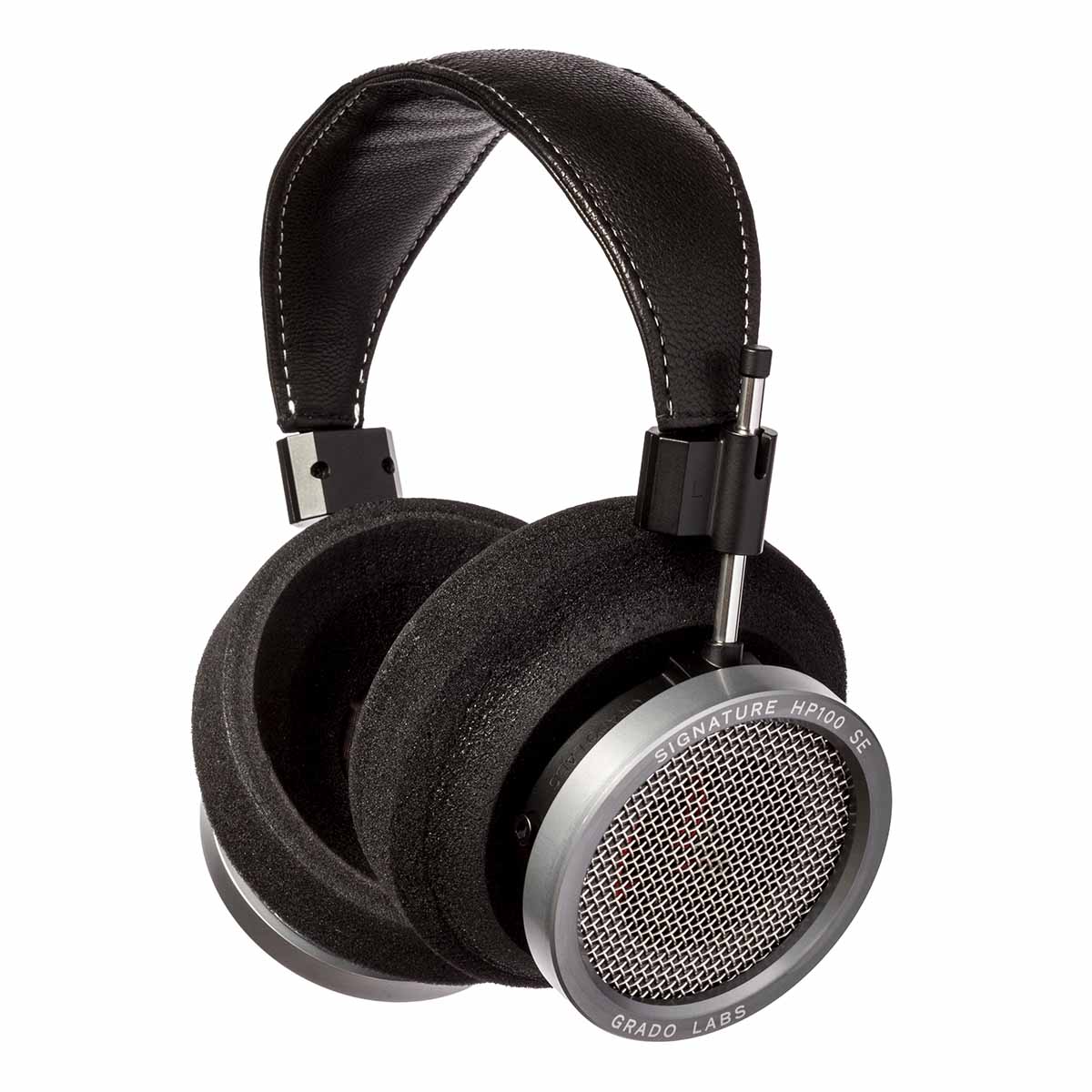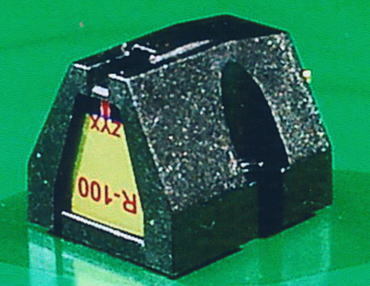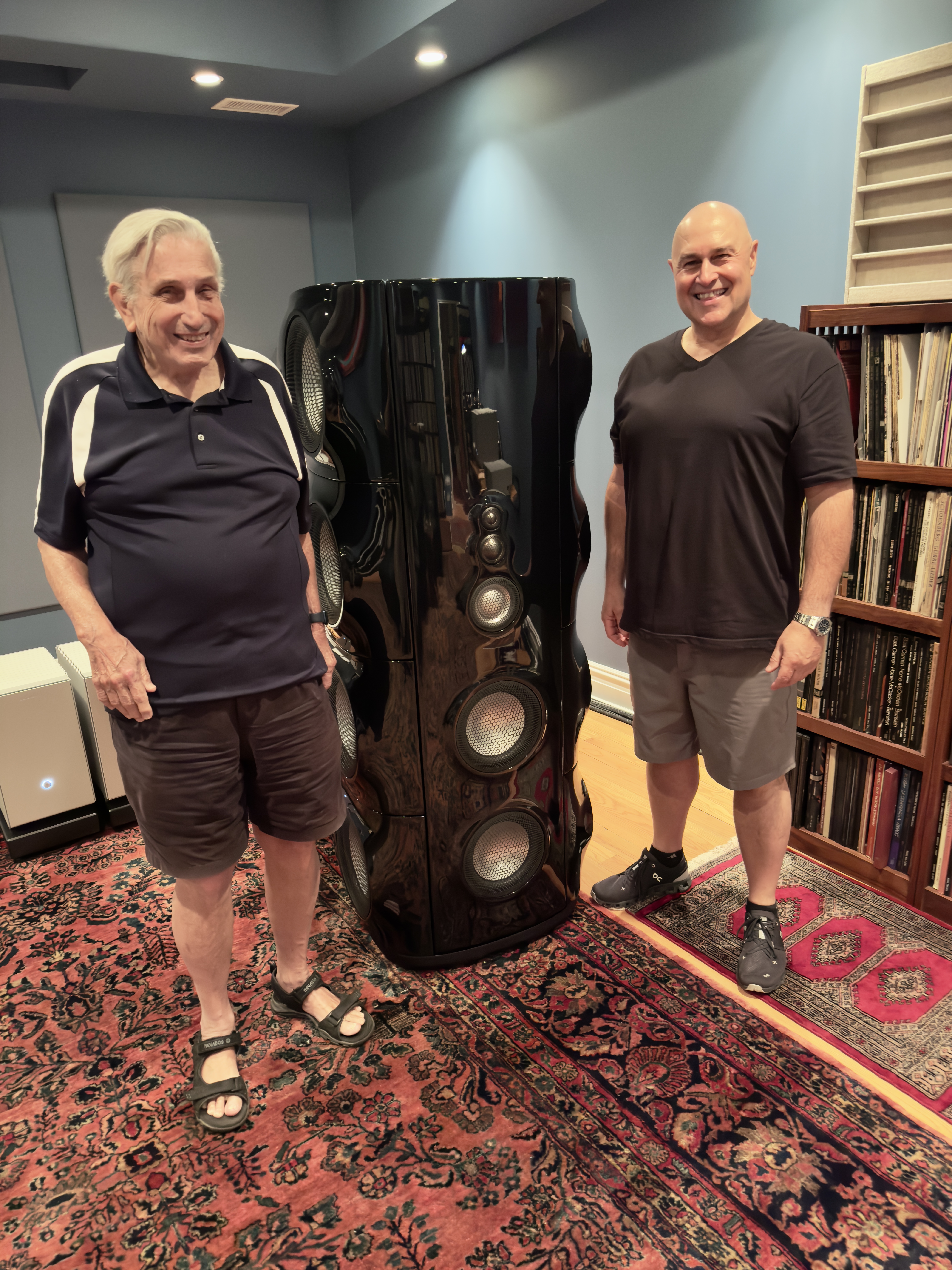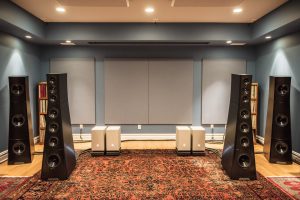This article, by Carol Clark, Dave Clark, Larry Cox, and Francisco Duran, originally ran when audioMUSINGS was in print - Issue 3, 1998.
Tubes, tubes, tubes. I'm not used to tube amps and preamps. I guess I always thought that I wouldn't like them. This goes back to an experience I had several years ago, when our friend Larry Fisher brought over a Cary preamp he was auditioning. I admit I was not sitting in the primo listening spot, but was over to the side and not facing the speakers. I can't remember what music we were playing, but it was a female vocalist. All of a sudden she hit a high note, and I felt like a piece of glass was slicing through the front of my head. As I winced, I turned to Dave and Larry to see if they were having the same reaction, but they sat peacefully, eyes closed, listening to the music. "Didn't you hear that?" I blurted out. "What?," they both responded. This pointed out differences in the way we hear, but it also made me decide that I didn't like tubes.
I've been proven wrong twice recently. In Issue 1, I reviewed the Rogue 66 preamp. Wow, I reiterate, for little over one bill, what a preamp! I've recently had the experience of listening to the Kora Titan 120-watt monoblock amplifiers, and once again, wow. First, these amps are beautiful to look at. They are very sleek, black with a chrome face plate, the tubes glowing up from the heat vents in the top. The knobs were sturdy. Second, and more importantly, they sounded terrific. They weren't perfect, but let me tell you what they did well first.
I listened to the Titans over the course of two nights. I listened to a series of songs that I consider to be layered and complex. I must repeat, I'm not a died-in-the-wool anal-retentive audiophile, who listens only to audiophile recordings. I listen to music I enjoy. I don't go for classical music, or even jazz that much. Most of my selections make grown men run screaming from the room. First, I tried "Dream" by Forest For The Trees. This selection sounded so good on the Rogue, I gave it a try here. It sounded just as good on the Titans. Then I tried song off a new CD by The Notwist, called "Torture Day." This song is not as detailed, but its pure simplicity shone through with the Titans. Next up was GusGus "Polyesterday." It too was detailed and crisp. I then listened to a couple of songs that I've listened too quite often, Dead Can Dance, "Don't Fade Away" and Nine Inch Nails, "Closer." Both sounded good. With all these selections, the soundstage was even with the speakers, not out in to the room the way I usually like it. It was also narrow, not past the far edges of the speakers. Making up for the lack of width was the depth, which went back well past the rear wall. The details were incredible. I could position each instrument and voice in a different part of the room. The most amazing example of this was a recording Dave put on for me called Dreamspeed by Anton Fier. The song starts out with some musical treatment that sounds like someone spinning hubcaps on concrete. I literally felt dizzy listening to this, and had to open my eyes. When equipment produces music that evokes that kind of response, it's good in my book.
Now for the downside. As I've said before, I like the Cure, a group which, to my intense dismay, is not known for well-recorded CDs. In fact, I can't really listen to any of their discs critically, except for Faith, but even that is not the best-recorded disc out there. The Titans really revealed this to me. I didn't even make it half way through the song before frantically searching for the remote to shut it off. After all, I didn't want to ruin the song for all time! I later found that some of my other "favorite" songs did not sound good on these amps. Blur "Song 2," the Cranes "Come This Far," and Material "Ineffect"). Ironically, I listened to the Nine Inch Nails cut thinking it would be shown to be poorly recorded, but to my surprise, it sounded incredible.
To sum up, the Kora Titans are really good at reproducing well recorded discs. They are very detailed, and project the music deep into the room. Unfortunately, they are also very revealing of poorly recorded CDs. Most audiophiles aren't in the habit of listening to "pop" music (like me), so these amps would be great for them. The well-recorded discs I listened to sounded great, better than my reference system, but the badly-recorded ones sounded really bad. My reference system is more forgiving. Carol Clark
As you may have noticed, Carol is more interested in the forest than the trees. While bass, midrange, treble, soundstaging, etc., are important to her, she is more concerned with just listening for enjoyment. But let me say that I agree with Carol on all counts.
If this were my review I would have started off screaming at the top of my lungs how incredibly the Titans' image, with a lifelike sense of palpability that is truly scary. As Carol said, good recordings sounded amazingly good and bad ones sounded worse than we had ever realized. The "living presence" of musical images was extremely addictive. A truly three-dimensional and tactile presentation, with deep and powerful bass (equaling, at times even surpassing the bass champions, the Muse 150s), and extended and pure treble. No grain or grit either, just silky-smooth extension and sparkle. The Holy Grail (er, midrange) was right on, not too rich nor too lean, but very lifelike, with none of the dreaded tube euphonics that we have come to associate with glowing bottles.
Actually, the Titans in many ways combine the best of solid-state and tubes, with the shortcomings of neither. Compared to the Muse 150s, the Titans are true high-end amplifiers, offering the music lover a revealing and attractive performer. By the way, they had no problem driving our Apogee Calipers, easily equaling in dynamics the high-current Muse amps. We'll have to keep our 150s, sadly, as the price of admission to the Koras is too high, plus, as Carol said, the Titans are just too good to use with much of the music we listen to! I never thought I would say that, but it is true. The Titans are an outstanding product. A rave review, you bet! Dave Clark
"Titan" seems an appropriate name for these monster amplifiers. They made mincemeat of my Classe CA100 in virtually every respect, from soundstaging to frequency extension, especially in the bottom end. At five times the cost, they ought to deliver. Though paying more doesn't always get you more, with the Titans, it does.
The Titans, like the Kora Eclipse preamp, blur the line between tubes and solid-state. Though they do not have a clear "tube" signature, they do have a signature, albeit one that tests my use of words. They don't easily allow themselves to be compared to other products. At the outset, I thought they were lean and fast. Typically the purview of solid state, "lean and fast" often means that strings sound steely, sweeping orchestral passages cold, hard, and off-putting. Violins through the Titans had a realness that conjured up an image of strings being bowed, but with a different sound than is typical of either tube or solid state amplifiers.
The Titans offer a clear sense of rosin on the bow when playing strings, but without the sort of distant, dark quality often associated with string sound. Instead, the sound is much more up front, without being harsh or bright. These amps give a sense that the strings are vibrating on the bridge in a way that is often heard live but rarely conveyed by audio. My impression of some orchestral passages was that violin strings were ready to hop off the bridge when played vigorously.
Both of the Kora products I've listened to, the Titans and the Eclipse, have a sound that I find quite musical, but slightly different from all the other gear I've heard, save YBA. Based on a first hearing of the title track of What's New by Linda Ronstadt through some wonderful Ensemble gear several years ago, I thought the sweeping violin passages should be lush and rich, a presumption that has been confirmed many times since. Unlike the Ensemble gear, the Koras, and the Titans in particular, told me that this rich sound was created by a large number of individual instruments. The two experiences are fundamentally different.
Pop music, from the Twin Peaks soundtrack to Cowgirl's Prayer by Emmylou Harris, to Joshua Judges Ruth by Lyle Lovett, all sounded slightly different than with my Classe. All were more evocative of reality than any of my previous system configurations. Although the presentation seemed a bit "light and breezy," Harris' and Lovetts' voices were sufficiently resonant to convey the nasal or throaty qualities of both singers without affecting the ease with which they could be identified.
The bottom end is where the Titans are most awesome. As with the Kora Eclipse, "pace" and speed dominated my notes. With the Titans, I thought that my toe tapping had become a permanent tick. So much music was presented with pace that I found myself tapping my toe involuntarily. The opening track of Fiona Apple's CD has substantial bass through my Classe. Through the Titans, the bass is much deeper while remaining incredibly tight and full. The difference between my amp and the Koras was like a rewriting of the book on bottom end reproduction. I could go on and on about this, but that would dilute my impression. Both my Oracle turntable and CAL Icon CD player are a bit limited in the bottom end, but the Titans let them rumble in a way my system hasn't for quite some time.
The midrange was nicely presented. On Holly Cole's Temptation CD, the "Train Song" features a bell moving from left to right across the soundstage. Compared to the Classe, the Titans portrayed the bell as less loud but better differentiated from the mix, while further behind the speakers. I can't say which is more correct, since I was not present at the recording, but the Titan's presentation sounded more appropriate– the point is not having the bell "walking" across the soundstage, but as part of the atmosphere. The Classe presented the bell as more dominant, and at the same volume as the rest of the music.
Soundstaging was only good. There are amps out there that provide a more sharply-defined image than the Titans. However, there was a good presentation of left, right, forward and back. Up and down was not rendered exceptionally well. In my opinion, the Titans do so many things well that imaging is simply not important. I liked them a lot, but unfortunately I don't have the money to play in their league. Given my pocketbook, it is hard to justify $7495, but if you can swing that kind of dough, the Titans will certainly make your system swing. Larry Cox
The news came a few months ago from Dave Clark. Hey Francisco, you're getting a couple of all-tube, dual-mono amps to listen to pretty soon. Are you ready for them? They're supposed to be killer! Oh yeah, I was ready. And soon there they were, sitting on my listening room floor, all chrome and glass, sophistication and class, right next to their Canadian country cousin, the Classe CA200, and sounding like a million bucks… Whoa, love at first sight is one thing, but love at first sound is another. At least wait ‘til the things warm up!
Before I give up any more of the blueprint, a little description is in order. Kora electronics are built in Toulouse, France and, as much as I can tell from an informal survey of experienced audio buffs, not too well known in the U.S. The two beautiful chassis are approximately 433 mm high x 310 mm wide x 120 mm deep. The chrome front panel frames a smoked glass faceplate, which complements a chrome knob which controls standby and operate, and is beautifully offset by the black casing. The feet are four good-sized, gold-plated metal cones. Kora also provides matching pucks for placement without puncturing. Around back are the power switch, speaker binding posts, and both single-ended and balanced inputs. No rows of tubes or ugly transformers sticking out of the top. No RCA inputs or unsightly screw terminals protruding from the sides. No unnecessary, brightly-lit VU meters blinding you in a darkened room. Everything is tucked neatly in two elegant and visually appealing boxes that you'd be proud to place anywhere in the house.
The power—oh yeah, the power—120 watts per mono block, with twelve Sovtek EL84Ms and one Sovtek 12AX7WXT per amp. The frequency band is stated to be 7 to 60,000 Hz. It seems these amps can reproduce frequencies my dog can hear and bass my little ProAcs can't play. These amps are ready to rock and roll, and rock they do. With Stan Webb's Chicken Shack CD, Plucking Good, through all kinds of Moody Blues discs, to the Ambrosia Anthology album, the Titans proved to be tight, fast, clean, and very uncolored. (What's that, you say you've never heard of Stan Webb? Check him out on Inak Records for a fresh and original approach to some good old blues.) It's amazing how good a drum kit can sound over equipment such as this. The delay of cymbals after they have been struck, for instance, was very natural, not overly extended, muted, or bright, and this on my CD-only front end to boot. Snare drums on the Ambrosia CD and Sade's CDs sounded a lot more palatable than usual.
Bass drum and bass guitar were fast and tight, not at all as warm or soft as one might guess after peeking into the top vents of the Titans and seeing all those glowing bottles. One particular disc that has drums and percussion aplenty is Claudia Gomez' Salamdera, on Clarity Records. It is a naturally balanced, two-microphone recording that is as clean as a honeymoon morning. Well! The way the Titans handled the articulation of the various percussion instruments was fantastic. The different tones of the congas, timbales, and cowbells rang true. This disc has some beautiful examples of samba. I'm becoming more in touch with this music lately, as I shy away from the pap that's being pushed as pop music these days. (OK, I'll admit that I'm getting older and I'd get mashed in a mosh pit.) Bass in orchestral music also sounded full, deep, and expansive. These amps gripped my little Proacs' lower end with a tight fist, and didn't let go.
Sibilance is one of the first things I notice when listening to equipment. This artifact has been brought to light recently in my system after listening to a gorgeous new speaker from Note Perfect. When I switched back to my ProAcs, I couldn't help noticing that they are somewhat merciless in the upper mids and lower treble when things aren't perfect. My EAD 1000 MK III/Pioneer Stable Platter digital rig ain't no Wadia or Mark Levinson, but I feel it's great for the price. It, along with the Kora amps, did a great job of reproducing that particularly sensitive portion of the music. For instance, at the beginning of track four of the A Twist of Jobim disc, when Oleta Adams starts singing "... a stick, a stone...," her vocals were more extended, rounded, and liquid than with my reference amp. In the midrange, Sade's voice sounds like it's coming from her whole throat and chest, breathy and natural, with no colorations, compression, or glare. Nor are the mids overly warm, and the rest of the sonic spectrum follows suit. The midrange had just the right amount of tube liquidity and correctness of tonality. Brass instruments had a realness that was a sheer joy to hear. Horns were full, round, and ever so natural sounding, floating in their places on the stage, so fine.
The only thing holding back the Titans' performance is the equipment with which it is partnered. These amps deserve top-notch ancillaries. In my system, they were glorious. I couldn't wait to get home and fire up CD after CD to see what treasures awaited. Even though I'm mostly a solid state man, I've experienced a fair amount of tube equipment from time to time, including Audio Research, Sonic Frontiers (Anthem), VAC, EAR, Atmasphere, even Dynaco, but the Kora stuff left the biggest impression. It competed very well in the bass department with my 200W solid state Classe amp. It wasn't overly lush or soft in the bass or rounded off on top. Instead, it has a fast, dynamic, slightly lean sound. It's open and three dimensional as all get out, with great atmosphere and placement of images plus a realistic sense of space between instruments, and on a soundstage that's to die for. It has just the right amount of tube liquidity and detail to melt you into your seat after a long, hard day, which makes for eventful listening sessions.
About the time I was ready to pack up the amps and pass them on, I received Kora's preamp, the Eclipse, from Kora's distributor, Randy Bankert. Not one to let great stereo equipment sit around for very long, I quickly put it into my system. Talk about synergy. But I'll have to talk about it in an upcoming issue. For now, I wish I had the Titans back. I miss them dearly. Some people have been to the mountain, some to Disneyland, some have even been to Cleveland. Well, now you don't have to travel to France for a great tube amp. It's come to us! Francisco Duran
Kora Titan Amplifiers
Retail $7495 pair




